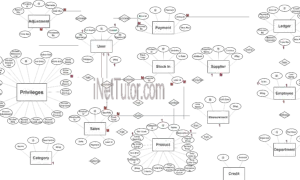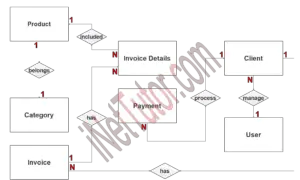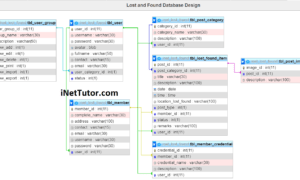IPO Model Conceptual Framework of Waste Management with Reward System
This post will show you how to construct a conceptual framework for the Waste Management with Reward System capstone project. This study’s conceptual framework was built on the input, process, and output (IPO) model.
About the Project
Table of Contents
The capstone project, “Waste Management with Reward System” is designed to persuade waste producers to reuse and recycle more wastes by giving rewards to members who actively participate in the waste management campaign. The said project will serve as a platform where all waste management-related records will be managed and kept.
At present, waste problem is still prevalent. The government is in continuous search for the solution of the arising waste management problem. One of the major factor that contributes to waste management problem is the behavior of the public or the waste producers in managing their own waste. Most of the people do not practice recycling for their recyclable waste materials and do not dispose their garbage properly. The local government must have an effective system to encourage the public to be more mindful of their own wastes.
Objectives of the Study
- To develop a system that will record garbage collection that will serve as a basis for rewards.
- The system will allow members to conveniently search location of junkshops and recycling centers.
- To design a system that will serve as a repository of all waste management relevant records.
- Test and improve the system in terms of functionality and reliability.
- To design a system that will make waste management easy, fast and rewarding.
- Design a project that will store the records properly and in organize manner using the database technology
Conceptual Framework/Model
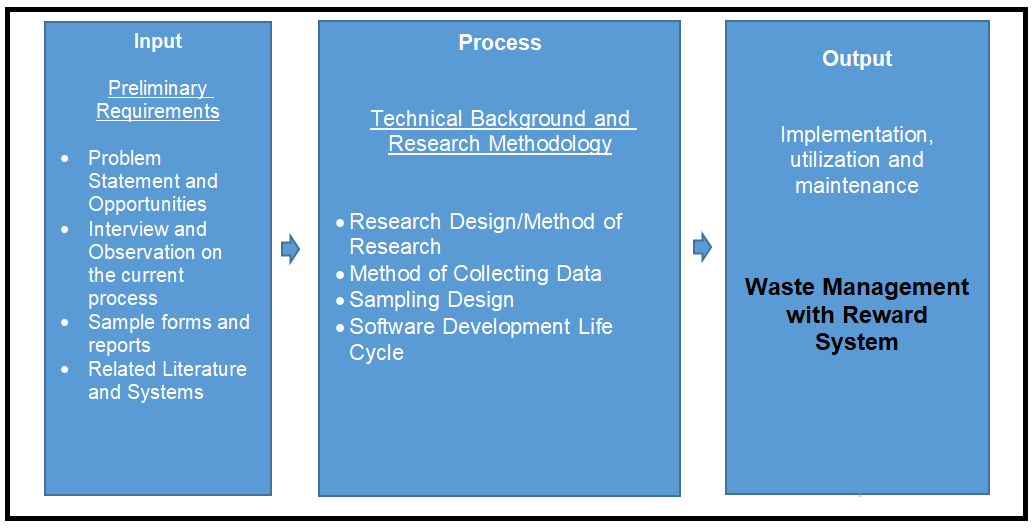
The image above is the conceptual framework of the project entitled Waste Management with Reward System. It is based on IPO model or also known as the input, process and output model.
Input
The input phase or the knowledge requirement stage consists of the following:
- Problem Statement and Opportunities – the researchers selected to conduct a study on waste management with reward system.
- Interview and Observation on the current process – the researchers conducted a preliminary interview and observation method to further understands the processes involved in the current ways to manage waste.
- Sample forms and reports – the researchers also gathered the sample forms and reports. This serves as a guide in the preparation of form design and reports of the system.
- Related Literature and Systems – the researchers conducted a research on the different literatures and related systems to serve as a guide in the development of the Waste Management with Reward System.
Process
- Method of Research
The researcher employed descriptive-developmental research methods. The typical processes of planning, conducting, and reporting a research project—problem definition, literature reviews, and research procedures—are described in this paper (link.springer.com). Descriptive research explains what the study is about. The study focuses on the current condition, with the goal of discovering new truths. It is concerned with existing relationship conditions, methods that succeed, ongoing processes, and developing effects. Descriptive research entails components of interpretation of the relevance of what is presented, with the primary emphasis on the finding of ideas and insights (www.slideshare.net).
- Method of Collecting Data
The researchers used interviews as a way to get in-depth and to gather data. It consists of one person interviewing another person for personal or detailed information. The interviewer will ask questions from a written questionnaire and recorded the answers in order to summarize the findings.
- Development of Research Instrument
Before collecting data, the researchers built their own research instrument. The Good and Scate questionnaire was used to validate this self-created assessment by three experts. The researchers employed common criteria defined in McCall’s Software Quality Model surveys to test the system’s quality.
- Software Development Life Cycle
Analysis and Quick Design
During Analysis and Quick Design, the researchers performed an interview with the respondents in the location of the study. Respondents were given the opportunity to make suggestions and requests about how the system should be created and developed. Following data collection, the researchers created an early design for the developed system.
Data Analysis
The researchers analyzed all the data, information, and the user requirements. This phase, the project lifecycle began. The researchers tried to understand the data and information on how to create the system and help conceptualize on how the developed system would be began beneficial to the operators. It analyzing the needs of the end users to ensure that the new system can meet their expectations.
System Design
The researchers started to develop the system. This phase describes the necessary requirements, features and operations that satisfies the functional requirements of the developed system which in place. This phase decides how the system operates.
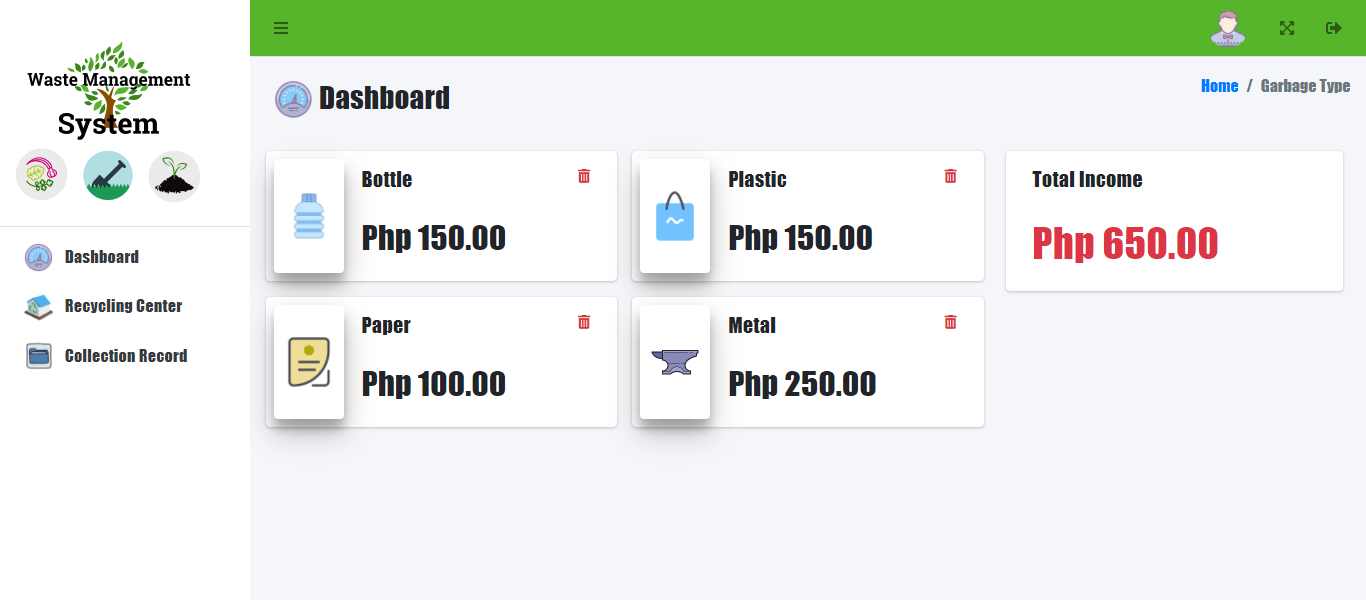
Prototype Cycle
This phase comprises the process of developing a system model, demonstrating it, and refining the data acquired. The researchers initially created a prototype model based on the planned design, which was then shown to the responders. After constructing the prototype, the researchers demonstrated the system’s operation, the flow of how it operates, and the functions of the elements included in the system. Refinement is the final stage. At this stage, the researchers updated the system based on the extra requirements of the operator. This included improvements to the flow, functionality, and features based on the needs provided by the respondents. This aided the researchers in generating a preliminary set of system requirements.
Testing
This includes the feed backing of the developed system that was installed and tested by three (3) experts and its intended users. This part put into production by moving the data and components from the old system to the new system.
Output
The final product of the study is Waste Management with Reward System that will help to effectively manage waste as well as encourage individuals to properly manage their waste by giving rewards. Implementation of the system is highly encouraged.
The implementation of an online trash management system that includes a reward system comes with a number of advantages. One of the most significant advantages is that it contributes to the maintenance of a clean environment. People are encouraged to dispose of their garbage in an appropriate manner more frequently when they are given positive reinforcement for doing so. This helps to cut down on the amount of waste that is transported to landfills, which is a significant problem for the surrounding ecosystem. The use of a reward system has a number of benefits, one of which is that it can help to incentivize people to recycle. If people are aware that they will be rewarded for recycling, it is likely that they will engage in this practice on a more regular basis. In conclusion, organizations can save money by using an online trash management system that includes an incentive system. Businesses have the opportunity to cut costs associated with garbage disposal by lowering the amount of waste that is deposited in landfills. The use of a reward system to online trash management has, all things considered, a great many advantages. When developing a system like this, it is essential to give careful consideration to the particular requirements of your company. The implementation of a system similar to this, on the other hand, is quite likely to be of great benefit to both the environment and your company.
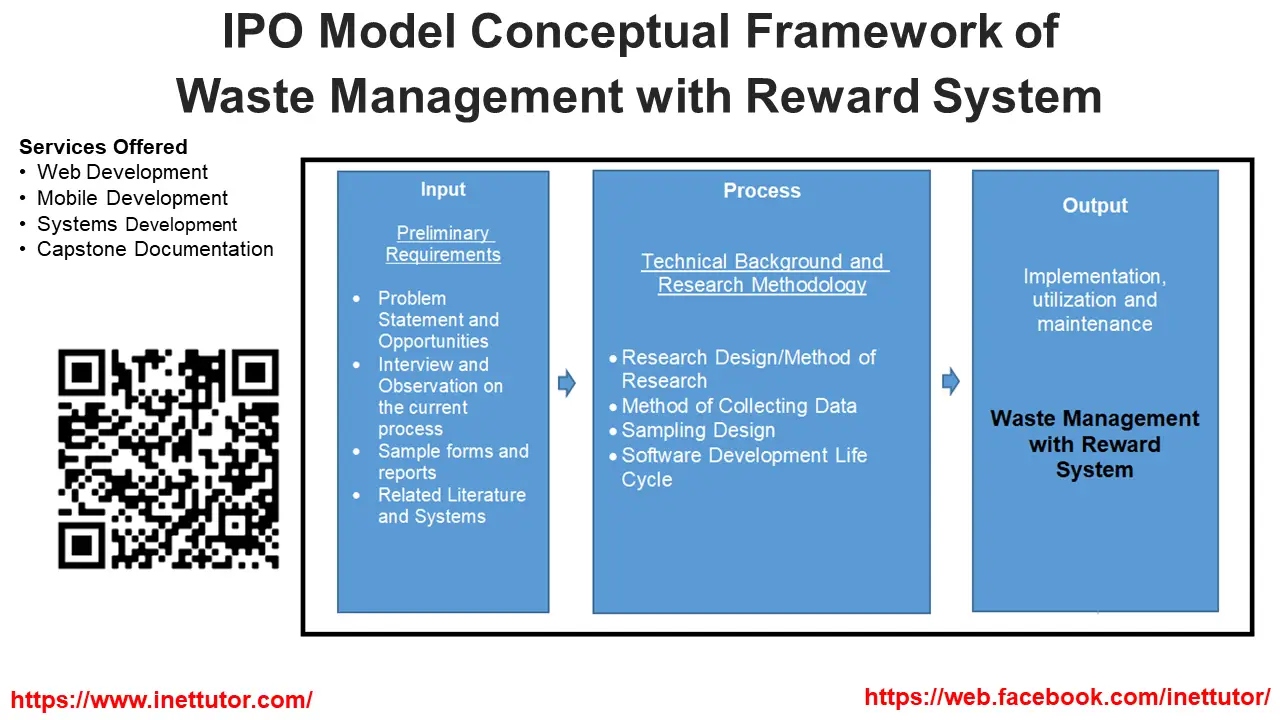
Summary
This article focuses on the study’s conceptual framework, which was created using the input, process, output (IPO) model. A Problem Statement and Opportunities, an Interview and Observation of the Current Process, Sample forms and reports, and Related Literature and Systems are all part of the input phase, also known as the knowledge necessary stage. Research Design/Method of Research, Data Collection Method, Sampling Design, and Software Development Life Cycle are all part of the process stage. The study’s final product is a Waste Management with Reward System that will aid in the effective management of waste while also encouraging users to appropriately manage their waste via the use of prizes. The implementation of the system is actively encouraged.
You may visit our Facebook page for more information, inquiries, and comments. Please subscribe also to our YouTube Channel to receive free capstone projects resources and computer programming tutorials.
Hire our team to do the project.
Related Topics and Articles:
Waste Management with Reward System ER Diagram
Waste Management with Reward System
Online E-Waste Management System Capstone Proposal
